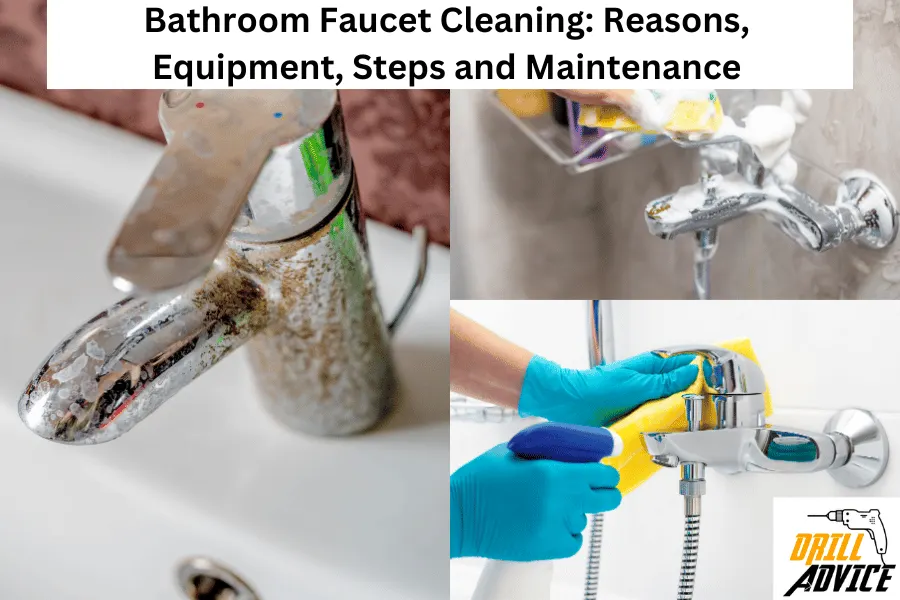
A bathroom faucet is a plumbing fixture that is installed on a bathroom sink. It is used for delivering water for washing hands, brushing teeth, and other personal hygiene tasks. The bathroom faucet should be cleaned continuously and properly because bathroom faucets can be dirty due to water contaminants, soap scum, toothpaste splatters, rusting, and general grime.
When you clean the bathroom faucet, you can use natural cleaners such as white vinegar and baking soda. As a commercial cleaner, you can use dish soap. You have to use a smooth cloth or sponge to scrub the paste on the surface, and you will need a toothbrush to clean the unreached areas of the faucet.
When you clean the bathroom faucet first, you should wash and rinse the faucet. Then, clean the faucet using dish soap. Next, you can use vinegar to clean the mineral deposits on the faucet. You can clean the stubborn grime on the faucet by using baking powder. Finally, you can wash and wipe the faucet by using some alcohol for sanitation.
While you are cleaning the bathroom faucet, you should not use any harmful or toxic cleaner to the user as well as any cleaner that can scratch the faucet surface and corrode it. You can maintain the faucet properly by regularly wiping the faucet, checking for leaks, using gentle cleaners, applying a protective layer, inspecting for O-rings and washers and monthly cleaning the aerator.
What Can Dirt the Bathroom Faucet?
Bathroom faucets can be dirt due to mineral contaminants in the water, soap scums, toothpaste splatters rusting, and general grime. This dirt can make the bathroom faucet more unpleasant and untidy. Below are the ways to dirt the bathroom faucet and how it affects to the bathroom faucet’s appearance, function, and usage.
- Water Contaminants – Tap water contains minerals like calcium and magnesium. When water evaporates from your faucet, these minerals stay on the surface and create white spots.
- Soap Scum: Soap scum can residue on the faucet. It can make a white layer on the faucet. This will prevent the shine of the faucet and make it more unpleasant and dirty.
- Toothpaste Splatters: Tiny toothpaste splatters can remain on the faucet while you are brushing your teeth. These splatters can make dirt and unpleasant the faucet.
- Rust: Metal faucets can be rusted due to hard water. Rust can give your faucet a grimy, aged appearance.
- General Grime: Dust, oils from your hands, and even airborne particles can stick to your faucet, making it look and feel grimy.
What Can I Use for Bathroom Faucet Cleaning?
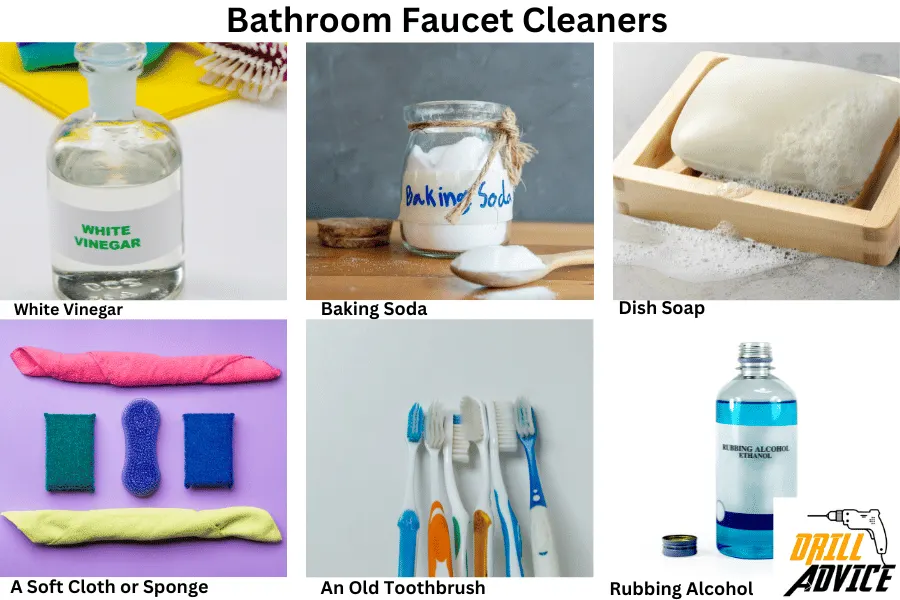
You can use white vinegar, baking soda, dish soap, a soft cloth, an old toothbrush, and rubbing alcohol to clean the bathroom faucet properly.
- White Vinegar: White Vinegar is an excellent mineral deposit cleaner on the faucet surface.
- Baking Soda: Baking soda is a mild abrasive paste. It helps to scrub away grime.
- Dish Soap: Dish soap is used for cutting through oils and general dirt.
- A Soft Cloth or Sponge: A soft cloth and sponge is useful to scrub the faucet with applied cleaner. When you select these, use nonabrasive cloth and sponge to prevent scratches.
- An Old Toothbrush: A toothbrush is the best tool to clean the faucet’s hard-reach areas.
- Rubbing Alcohol: Alcohol is good for the final touches and sanitizing.
Read More About
- Bathroom Sink Cleaning: Reasons, Equipment, Steps and Maintenence
- Bathtub Cleaning: Reasons, Equipment, Steps and Maintenance
How to Clean the Bathroom Faucet?
A bathroom faucet can be cleaned by following these 6 essential steps.
Step 1: Pre-Rinse Faucet
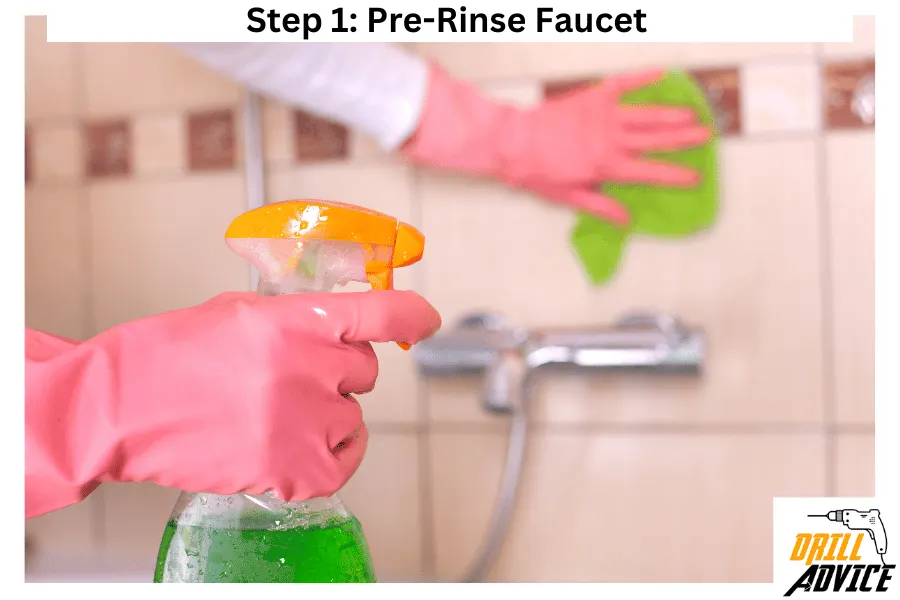
First, you should remove any items from around the sink area. This ensures you have easy access to all parts of the faucet. Then, use lukewarm water to pre-rinse the faucet. The warm water helps to loosen grime and makes the next steps more effective.
Step 2: Clean the Faucet with Dish Soap
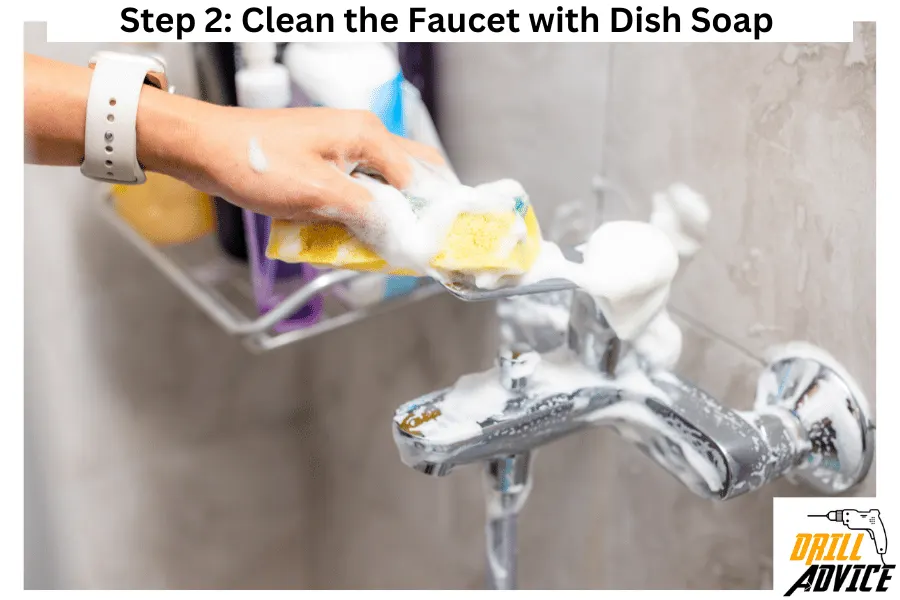
Then, apply dish soap to a soft cloth or sponge. Then, rub in circular motions, focusing on areas where fingerprints and water spots mostly accumulate on the faucet.
Step 3: Use Vinegar to Remove Mineral Deposits on the Faucet
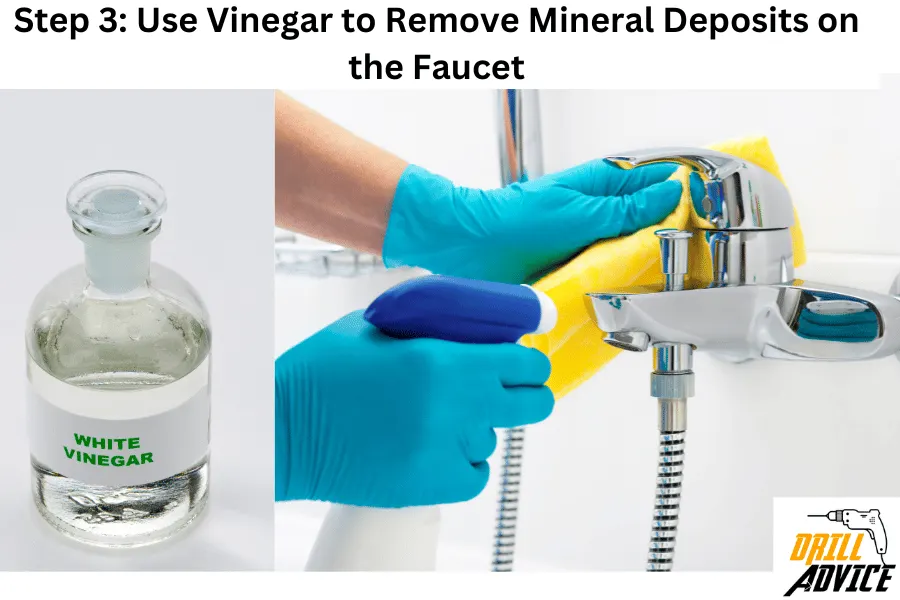
Tap water consists of minerals like calcium and magnesium. Mineral deposit is the remaining solid from the tap water. Mineral deposits can be removed using vinegar. You may need a second round for stubborn spots. Make sure to keep the area ventilated, as vinegar has a strong odor.
Step 4: Apply the Baking Soda on the Faucet
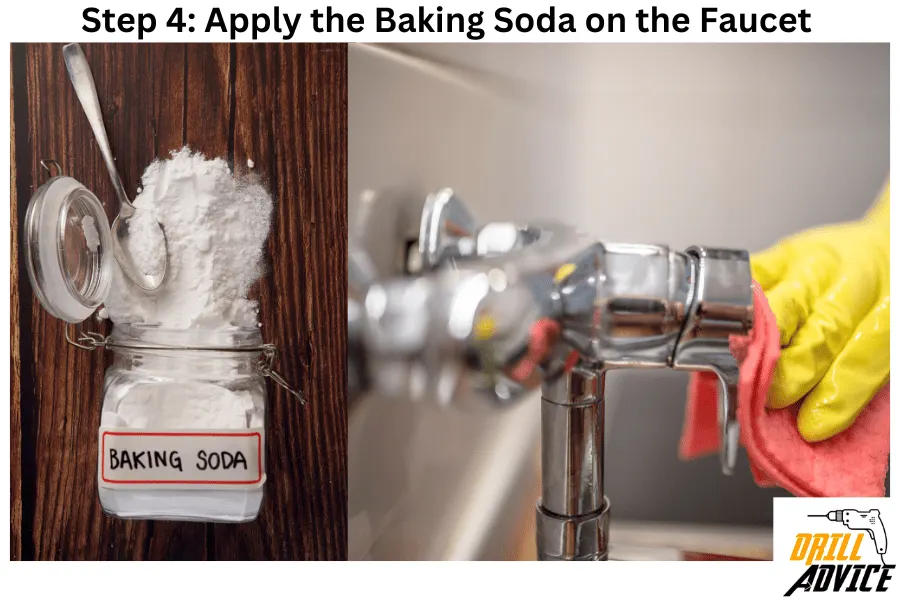
Baking soda is important for stubborn grime or thicker layers of soap scum on the faucet’s surface. You can also add a few drops of essential oils like lavender or tea tree for added antiseptic properties. The paste should have a toothpaste-like consistency for best results. Let it sit for about 5 minutes before scrubbing to allow it to penetrate the grime.
Step 5: Wash and Wipe the Faucet
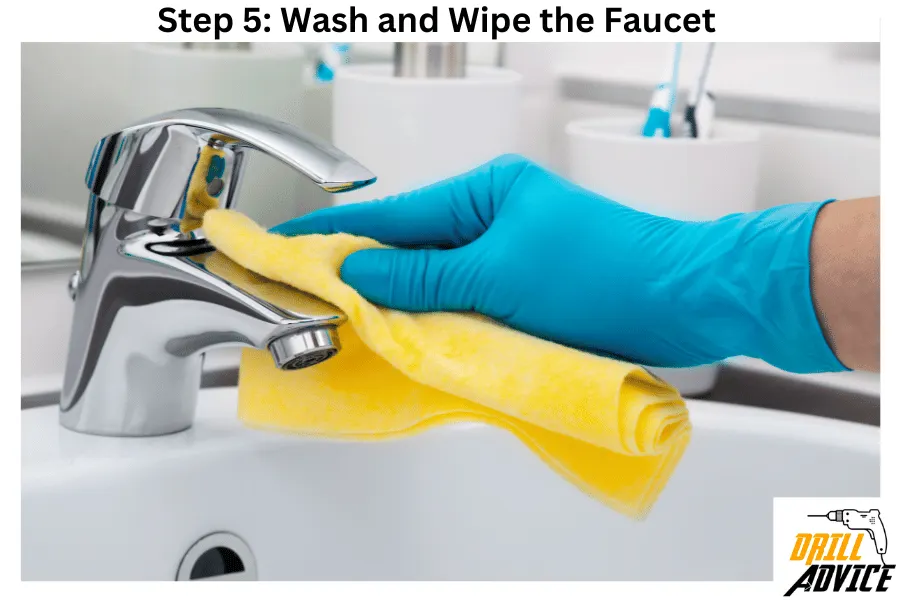
After wash and wipe you can apply some alcohol for sanitation. This will add an extra sparkle and remove any remaining traces of cleaning products.
What Should I Not Use for Bathroom Faucet Cleaning?
You should not use abrasive pads, bleach, ammonia-based cleaners, acidic cleaners, and oil-based soaps to clean the bathroom faucet cleaning. These compounds can damage the faucet structure and aesthetic appeal of the faucet badly.
- Abrasive Pads: You should not use steel wool or other abrasive scrubbers when cleaning the bathroom faucet. Because it can scratch your faucet surface finish.
- Bleach: Some faucet materials are not compatible with bleach. Before you use bleach on the faucet make sure whether it is a compatible cleaning material for the faucet.
- Ammonia-Based Cleaners: These can break down some finishes, making them dull over time.
- Acidic Cleaners: Acidic cleaners can corrosion metal faucets.
- Oil-Based Soaps: These can leave a residue that attracts more dirt, making your cleaning efforts counterproductive.
How to Maintain the Bathroom Faucet Properly?
You can maintain the bathroom faucet properly by following the steps and guides with minimum cleaning and maintenance.
- Regular Wipe the Faucet – You can wipe down your faucet with a soft cloth at the end of the day. This quick action can prevent water spots and mineral deposits from sticking on the surface on the faucet.
- Check for Leaks – Check for the faucet leaks because leaking water can build up mineral deposits and water stains on the leak area.
- Gentle Cleaners – For daily or weekly cleaning, stick to mild soaps and detergents. Save the heavy-duty cleaners for tougher jobs, and even then, use them sparingly.
- Apply a Protective Layer – Consider applying a faucet wax or another protective sealant. This adds an extra layer of protection against grime and water spots.
- Inspect O-Ring and Washer – You should check O-Ring and washer periodically for wear and tear. You should replace and repair them when it is necessary.
- Clean the Aerator – The aerator can be get clogged with mineral deposits. Hence, every few months, you should remove it and soak in a vinegar solution to keep the water flowing smoothly.
